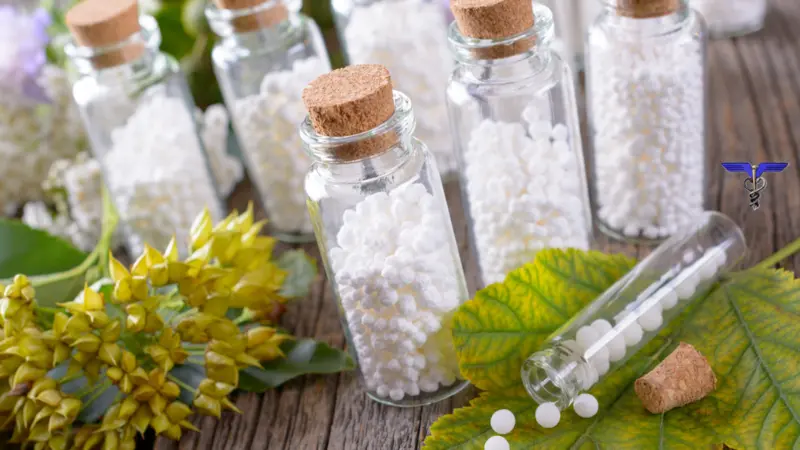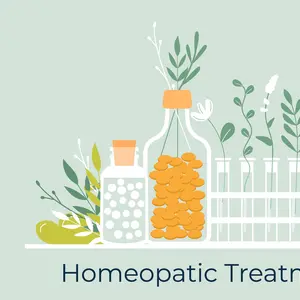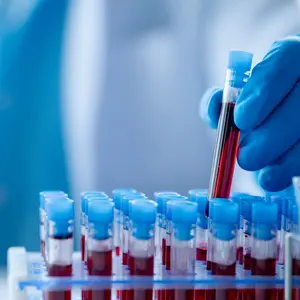

Complementary and Alternative Medicine (CAM)

Complementary and Alternative Medicine (CAM)
What Homeopathic Medicine Offers to People with Lead Poisoning and Other Environmental Exposures
Pollution is turning the earth and earthlings prematurely gray. What can you do about it with homeopathic medicines?
When Big Sean, a Grammy Award-nominated and BET award-winning hip-hop artist, appeared on the Daily Show in late January, 2017, he talked about his upbringing in Michigan. Big Sean told the audience that his mother was one of many exposed to lead in the drinking water. But in her case, he added, “holistic care and homeopathic remedies” enabled her “to reverse a lot of the effects of the lead poisoning.”
In environmental health issues, prevention is always best; but it is important to ask what can be done for people already exposed to toxic chemicals and heavy metals, for these exposures seem to be on the increase. Conventional medicine generally offers little for people suffering from such exposures other than palliative or suppressive treatment of their symptoms. On the other hand, animal and human studies are beginning to show that homeopathic medicines offer potentially valuable therapeutic benefits.
Because many Americans reading this article are not necessarily familiar with homeopathy, it may be helpful to know that a recent survey found that 95% of French pediatricians, dermatologists, and general practitioners prescribe homeopathic medicines. This data was derived from the French government’s record of doctors’ prescriptions, making it very accurate. When one realizes that the World Health Organization deems France to have the best health care in the world, it is time for other countries to explore what France does right and emulate these efforts.
To understand why homeopathic treatment makes sense in cases of exposure to heavy metals and other toxic substances, it makes sense first to discuss some basic principles of homeopathy.
The Logic of Homeopathy
The underlying premise of homeopathic medicine is that symptoms are not simply something “wrong” that needs fixing. Symptoms represent defensive and adaptive efforts of the body to deal with various disturbances, whether they be infectious disease, environmental poisons, or stress. Symptoms do not mean the body is simply surrendering to attack; they signify the body’s attempts to try to defend and heal itself. This perspective is important to understanding homeopathy as well as evolution.
In treating any problem, chronic or acute, a homeopath selects a given medicine based on its ability to cause, in experimental situations, symptoms similar to those the sick person experiences. By complementing and reinforcing the body’s inherent defenses, homeopathic medicines actually work with, not against, the body. Using “the principle of similars”—which is that like can cure like—is the basis of homeopathic medicine, and according to the Nobel Prize-winning scientist, Emil A. von Behring, who developed the diphtheria and tetanus vaccines, it was homeopathy which inspired him. Employing the principle of similars in treating people exposed to environmental poisons makes sense because such treatment mimics and augments the body’s natural defenses. In addition to 200 years of clinical experience, there is now a body of scientific evidence to support use of homeopathic medicines to treat various environmental exposures. Study 1; Study 2; Study 3.
Homeopathic Research*
In 1994, a highly respected German physician and researcher, Klaus Linde, MD, in collaboration with Wayne B. Jonas, MD (the former head of what is now called the National Center for Complementary and Integrative Health within the National Institutes of Health), performed a review of research on the use of homeopathic medicines to treat exposures to environmental toxins. They published their results in the internationally respected journal Human and Experimental Toxicology.
Linde, Jonas, and colleagues reviewed over 100 studies evaluating the prophylactic and therapeutic effects of homeopathic doses of normally toxic substances. Besides evaluating the results of the various studies, the researchers assessed how well each study was designed and conducted. Of forty high-quality studies, 27 showed positive results from homeopathic treatment.
What was particularly intriguing about their findings was that those researchers who tested doses in the assumed sub-molecular range had not only the best designed studies but more frequently showed statistically significant results from these other nanodoses. (“Nanodoses” refers to the very small doses of medicines used in homeopathy. While it was assumed by scientists that no molecules remained from the repeated dilutions, a body of new research has now consistently confirmed that significant nanoparticles of the original medicine persist in homeopathic medicines, resembling the very low doses to which many of our hormones are known to respond.)
New research has confirmed that nanodoses are able to pass through cellular membranes and penetrate the blood-brain barrier with greater ease than do larger toxic doses of substances. Study 1, Study 2, Study 3.
Specifically, several researchers administered (usually to rats and mice) crude doses of arsenic, bismuth, cadmium, mercury chloride, or lead. Their research showed that animals which were pretreated with homeopathic doses of these same substances and then given repeated homeopathic doses following exposure to the crude substance, were more successful at excreting these toxins through urine, feces, and sweat than were animals given a placebo. Furthermore, in nine studies mice receiving homeopathic doses higher than a potency of 15C–and these higher potencies contain less of the base substance than a 15C—demonstrated a 40% decrease in mortality compared to mice in the control group.
Pre- and post-treatment worked, however, only when homeopathic principles were followed. In other words, when animals were treated with a homeopathic dose that did not correspond to the toxic substance to which they were exposed, there was no benefit. In those cases, failure to follow the principle of similars doomed the test animals.
None other than the highly prestigious journal New Scientist reported on “highly promising results” from a study showing that mice given homeopathic arsenic were better able to excrete crude doses of arsenic in their stool, urine, and sweat. What was particularly impressive about this study was that it showed homeopathic arsenic had a highly significant effect on two liver enzymes (ALT and AST) that are indicators of liver toxicity and known to be boosted by arsenic poisoning. This positive effect was found to occur within 72 hours and lasted for up to 30 days when the study was completed.
A group of university researchers in India has conducted a significant body of laboratory trials testing homeopathic treatment of mice exposed to toxic heavy metals. Study 1; Study 2; Study 3; Study 4; Study 5; Study 6; Study 7, Study 8. Compared to mice given placebo, the mice treated homeopathically showed activation of various detoxifying enzymes from the liver as well as improvement in other measures, including cytogenetical (chromosome aberrations, micronuclei, mitotic index, sperm head anomaly) and biochemical (acid and alkaline phosphatases, lipid peroxidation).
In 2011, French researchers demonstrated that liver cell mortality induced in vitro by the widely used herbicide RoundUp (glyphosate) can be almost entirely prevented by plant extracts combined into a homeopathic preparation called Digeodren [“Dig1”], which is made from Taraxacum officinalis (Dandelion) D4, Berberis vulgaris (Barberry) D5, and Lappa major (Burdock) D4 in 70% alcohol.
In 2016, a study was conducted on rats exposed to the herbicide Roundup®. Using four groups of forty adult male rats each, researchers tested the effects of administering Dig1 prior to and throughout eight days of Roundup intoxication (at 135 mg/kg bw/d). The four groups of rats received the following treatments in drinking water: control, Roundup 0.5%, Dig1 2% alone, and Dig1 2% and Roundup 0.5% (prevention and treatment).
After treatments, horizontal and vertical locomotor activities of the animals were measured by use of actimeters (a non-invasive method of monitoring rest/activity cycles). Brain, liver, kidneys, heart, and testes were collected and weighted. Body weights as well as feed and water consumption were recorded. Proteins, creatinine, urea, phosphate, potassium, sodium, calcium, chloride ions, testosterone, estradiol, AST, and ALT were measured in serum. Various liver enzymes were also assessed.
Dig1 used alone did not have any physiological or biochemical impact. Dig1 used in conjunction with Roundup did. Out of a total of 29 measured parameters, eight were significantly affected by Roundup absorption within little over a week. Of these eight parameters, five were totally restored by Dig1 (horizontal and vertical locomotor activities, CYP2D6 activity, plasmatic Na + and estradiol), one was almost fully restored (plasmatic K+), and only two were not repaired (GGT activity and plasmatic phosphate). The specific toxic effects of Roundup and the therapeutic effects of Dig1 treatment were conclusively demonstrated, both at the behavioral and biochemical levels. Without any observable side effects, Dig1 exhibited strong therapeutic properties against short-term Roundup intoxication.
In this day of exposures to various heavy metals, chemicals, radiation, and poisons, it is worthwhile knowing that homeopathic medicines provide a safe and often effective means to protect against the effects of these toxic substances.
The implications of these and other studies are quite significant. In this day of exposures to various heavy metals, chemicals, radiation, and poisons, it is worthwhile knowing that homeopathic medicines provide a safe and often effective means to protect against the effects of these toxic substances.
Human Studies
Groundwater arsenic has affected millions of people globally. In parts of West Bengal (India) and Bangladesh alone over 100 million people are at risk, and the supply of arsenic-free water is grossly inadequate. A potentized homeopathic remedy, Arsenicum Album 30C, was administered to a group of people affected by groundwater arsenic, and the arsenic contents in their urine and blood were periodically measured. The activities of various toxicity marker enzymes and compounds in the blood (namely, aspartate amino transferase, alanine amino transferase, acid phosphatase, alkaline phosphatase, lipid peroxidation, and reduced glutathione) were also periodically monitored for up to 3 months. Highly encouraging, the results of this test suggest that a homeopathic remedy can alleviate arsenic poisoning in humans.
The above study followed two groups of people in West Bengal over a two to three month period. One group comprised 55 people (32 men, 23 women) who were entered into a double-blind, placebo-controlled trial (33 in treatment group, 22 in placebo group). The first group experienced higher excretion of arsenic in their urine for the first eleven days, compared to those given a placebo.
The second group included 68 subjects (47 males and 21 females); but they refused to sign “informed consent” forms unless all subjects were assured treatment and not given placebo (thus, this group was not placebo-controlled). This second group experienced strikingly high excretion rates in the urine on day 7 (62.30 ppb), and thereafter arsenic levels steadily declined to reach almost the lower limit of the normal range by the 45th day (10.78 ppb). The same held true for the arsenic levels in their blood: they experienced a significant decline by day 30, with levels returning to the normal range by the 60th day. Although skeptics rightfully may assert that this group did not have a control cohort given placebo, the high rate of removal of arsenic from their blood and urine is not something that will or belief alone can produce.
Of additional interest is that, as confirmed by various laboratory tests, there was a steady decline in the toxicity-denoting enzymes in the blood of those patients given the homeopathic medicine, as compared with those given placebo.
Two years later the researchers conducted a follow-up to this study. Out of 130 subjects given homeopathic Arsenicum album 200C, 96 continued to take the remedy for six months, 65 for one year, and 15 for up to two years. They provided samples of their urine and blood at six months, one year, and finally at two years. (None out of 17 who received placebo showed up to provide blood or urine at these longer intervals because they received no benefit from the placebo treatment.) Standard methodologies were used for determining arsenic content in blood and urine and for measuring toxicity biomarkers like acid and alkaline phosphatases, alanine and aspartate amino transferases, lipid peroxidation and reduced glutathione and anti-nuclear antibody titers. Most of the subjects reported maintaining the improvements they achieved within the first three months of homeopathic treatment in their general health and spirit, appetite, and sleep. A few with skin symptoms and burning sensations, however, improved further. This was supported by the data on toxicity biomarkers, levels of which remained fairly within normal range.
The researchers concluded that administration of Arsenicum album 200C considerably ameliorates symptoms of arsenic toxicity on a long-term basis and can be recommended for interim use, particularly in high-risk remote villages lacking modern medical facilities and arsenic-free drinking water.
A double-blind randomized trial was conducted with 131 workers who suffered lead poisoning at the Ajax battery plant in Bauru, São Paulo State, Brazil. Subjects were prescribed homeopathic doses of lead (Plumbum metallicum 15C) or placebo, orally for 35 days.
In this study researchers concluded that the homeopathic preparation of lead had no effect on reducing blood levels of lead in exposed workers. This study was published in the leading journal in the field of homeopathy, contrary to assertions by skeptics that studies with negative results are never published in homeopathic journals. It should also be noted, however, that this study used the 15C potency of lead, while most of the other research cited here used 30C or 200C potencies (which many homeopaths find to have a deeper-acting and more penetrating effect). Moreover, in a study published in a conventional science journal, higher potency homeopathic doses of lead (Plumbum 1,000C) and Opium 30C were partially effective in the recovery of liver enzyme (delta ALAD) activity in lead-poisoned rats. Plumbum 1,000C did not appear to exhibit protective effect when the rats were fed lead at high concentrations (greater than 25 mg% lead acetate), as assessed by blood delta ALAD activity and hemoglobin concentration. But it was somewhat effective in recovering delta ALAD activity and relieving anemia caused by chronic exposure to low doses of lead (below 15 mg% lead acetate).
This new research I’ve been discussing simply confirms 200+ years of experience of tens of millions of patients: nanosized doses of specifically targeted homeopathic medicines create powerful physiological effects.
[N]anosized doses of specifically targeted homeopathic medicines create powerful physiological effects.
What You Can Do With Homeopathic Medicines
For People with Chronic Symptoms and Syndromes
As an adjunct to conventional medical treatment, professional homeopathic care is recommended for people who have been exposed (or think they have been exposed) to toxic substances. Many classical homeopaths will first prescribe a “homeopathic constitutional medicine” to strengthen a person’s overall health and help them eliminate any toxins to which they have been exposed.
A homeopathic constitutional medicine may not always work deeply or effectively enough until the patient receives a homeopathically-prepared dose of the toxic substance to which the person was exposed (or a substance that produces very similar symptoms).
The actual potency that the homeopath will use depends on factors too numerous to discuss in this short article, though the 30th potency is one of the most common. Some homeopaths will recommend a dose given just once, some will recommend a single dose repeated once a month for several months, and some will recommend several doses a day for a week or two, perhaps repeated a couple months later if some, but not full, benefit had been received. Dosage will depend primarily on the severity of the case.
Even if you do not have a professional homeopath in your town, many homeopathic practitioners “see” their patients via Skype or do consultations over the telephone. Unlike acupuncturists, who put needles in you, or chiropractors, who adjust your spine, homeopaths are not “hands-on”: they simply need to conduct a detailed interview.
Although it is theoretically possible for educated people to explore self-treatment with homeopathic medicines, it is generally best to work with a professional homeopath when a person has been exposed to environmental poisons, even in sub-clinical doses.
For People Suffering from a Recent Exposure
If your symptoms are serious or potentially serious, it is important to see a professional homeopath and/or physician. While a homeopath will commonly prescribe a safe homeopathic dose of the toxic substance to which one was exposed, the homeopath may instead decide that a different substance more closely matches the patient’s unique symptoms.
For Prevention
If you know that you are likely to be exposed to a specific toxin in the near future, it may be wise to consider taking a couple of doses of the 30th potency of that substance prior to exposure. One should consider taking a dose the night before, in the morning of the next day, just prior to exposure, and twice a day for four days.
While research shows that homeopathic medicines help organisms excrete toxins more effectively, they cannot be expected to help significantly if a person is exposed to very high doses of a poison.
Closing Thoughts
As noted above, 95% of French pediatricians, dermatologists, and general practitioners prescribe homeopathic medicines. Homeopathy is the leading alternative medical system practiced by physicians throughout Europe. According to a 2010 article in The BMJ (British Medical Journal), an impressive 57% of people in Germany use homeopathic medicines. When some German politicians recently sought to stop governmental reimbursement for homeopathic treatment, the German Medical Association announced its support for homeopathy and for reimbursement for homeopathic care. Further, the association’s president, Jörg-Dietrich Hoppe, defended homoeopathic treatment, saying it was an important part of medicine.
In early February 2017, Member of the European Parliament and former President of Slovenia, Alojz Peterle, spoke out in favor of homeopathy. He made an impassioned plea for the potential for homeopathy as a safe, successful, and cost-effective way to help both human and animal health.
*It must be candidly noted that the research discussed in this section was damaging and sometimes lethal to the animals involved. Although the results of these studies can and should be of significant benefit to all living creatures, making reference to that research does not condone such experimentation
This article is reprinted with permission from the author, Dana Ullman, MPH, CCH and first appeared on https://homeopathic.com.


 By
By






